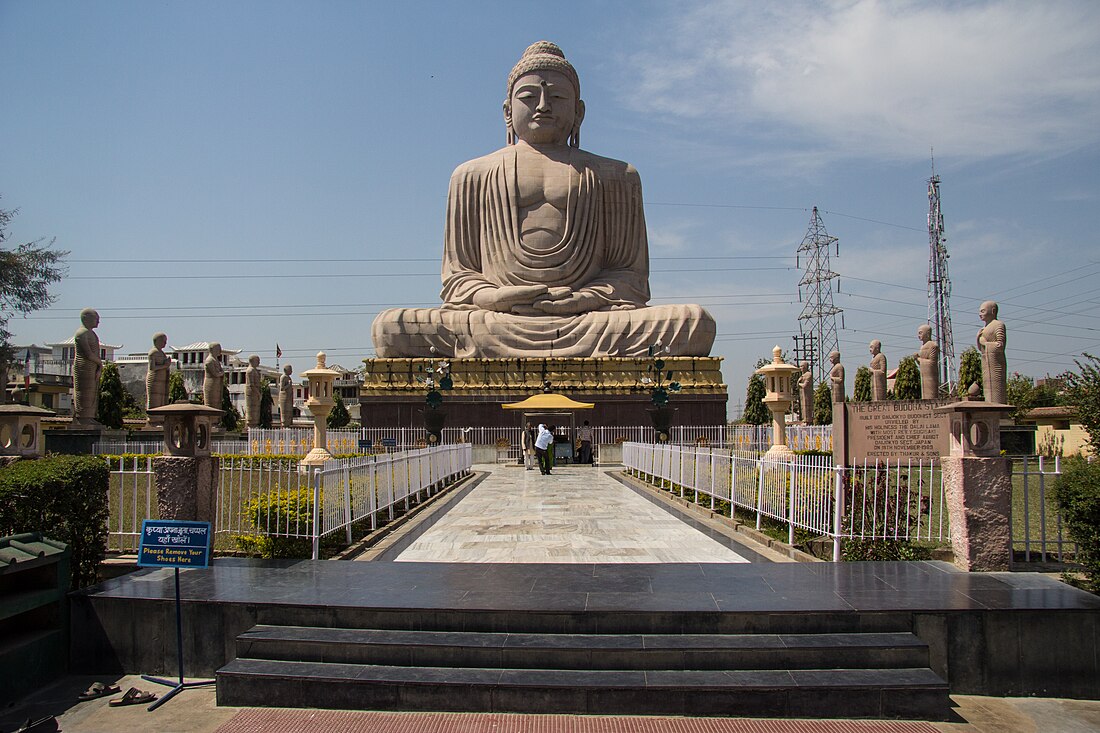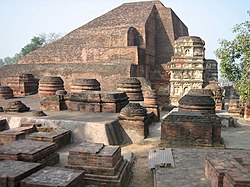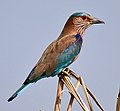Bihar
state in eastern India From Wikipedia, the free encyclopedia
Bihar (/bɪˈhɑːr/; Hindustani pronunciation: [bɪˈɦaːr] (![]() listen)) is a state in the Republic of India, covering an area of 38,202 mi² (99,200 km²). The capital is Patna. Bihar is bordered by the Indian states of Uttar Pradesh to the west, Jharkhand to the south, and West Bengal to the east. To the north of Bihar is the country of Nepal. In traditional Indian geography it falls under the East Indian zone. It is one of the poorest regions in India.
listen)) is a state in the Republic of India, covering an area of 38,202 mi² (99,200 km²). The capital is Patna. Bihar is bordered by the Indian states of Uttar Pradesh to the west, Jharkhand to the south, and West Bengal to the east. To the north of Bihar is the country of Nepal. In traditional Indian geography it falls under the East Indian zone. It is one of the poorest regions in India.
Bihar
बिहार 𑒥𑒱𑒯𑒰𑒩𑓂 | |
|---|---|
|
Clockwise from top: Great Buddha Statue at Bodh Gaya, ruins of ancient Nalanda University, Madhubani painting from Mithila region, Brahma Kund hot springs in Rajgir | |
 Location of Bihar in India | |
| Coordinates (Patna): 25.4°N 85.1°E | |
| Country | India |
| Formation |
|
| Statehood | 26 January 1950 |
| Capital | Patna |
| Largest city | Patna |
| Districts | 38 |
| Government | |
| • Governor | Phagu Chauhan (BJP)[1] |
| • Chief Minister | Nitish Kumar (JD(U)) |
| • Deputy Chief Minister | Sushil Kumar Modi[2] (BJP) |
| • Legislature |
|
| • High Court | Patna High Court |
| Area | |
| • Total | 94,163 km2 (36,357 sq mi) |
| • Rank | 12th |
| Population (2011)[4] | |
| • Total | 103,804,637 |
| • Rank | 3rd |
| • Density | 1,102/km2 (2,850/sq mi) |
| • Major Ethnolinguistic Groups | Bhojpuris Maithils Magahis |
| Demonym | Bihari |
| GDP (2017–18) | |
| • Total | ₹4.88 lakh crore (US$64 billion) |
| • Per capita | ₹38,860 (US$510) |
| Languages | |
| • Official | Hindi |
| • Additional official | Maithilia,[6] Urdub |
| Time zone | UTC+05:30 (IST) |
| UN/LOCODE | INBR |
| ISO 3166 code | IN-BR |
| Vehicle registration | BR |
| HDI (2017) | 0.566[7] (medium) · 29th |
| Literacy (2011) | 63.82%[8] |
| Sex ratio (2011) | 918 ♀/1000 ♂[9] |
| Website | gov |
| |
Population
A census in 2023 of the 130 million people in the state collected information about castes for the first time since 1931. 15.5% were upper caste. 27.1% were other backward class. 36% were extremely backward class and 21.4% were scheduled castes or scheduled tribes. Brahmins, the highest caste, were less than 4% of the population.[10]
Provincial symbols of Bihar
- Indian Roller, Provincial bird of Bihar
- Gaur or Indian bison, Provincial animal of Bihar
- Sacred fig, Provincial tree of Bihar
- White Orchid-tree, Provincial flower of Bihar
See Also
References
Wikiwand - on
Seamless Wikipedia browsing. On steroids.








